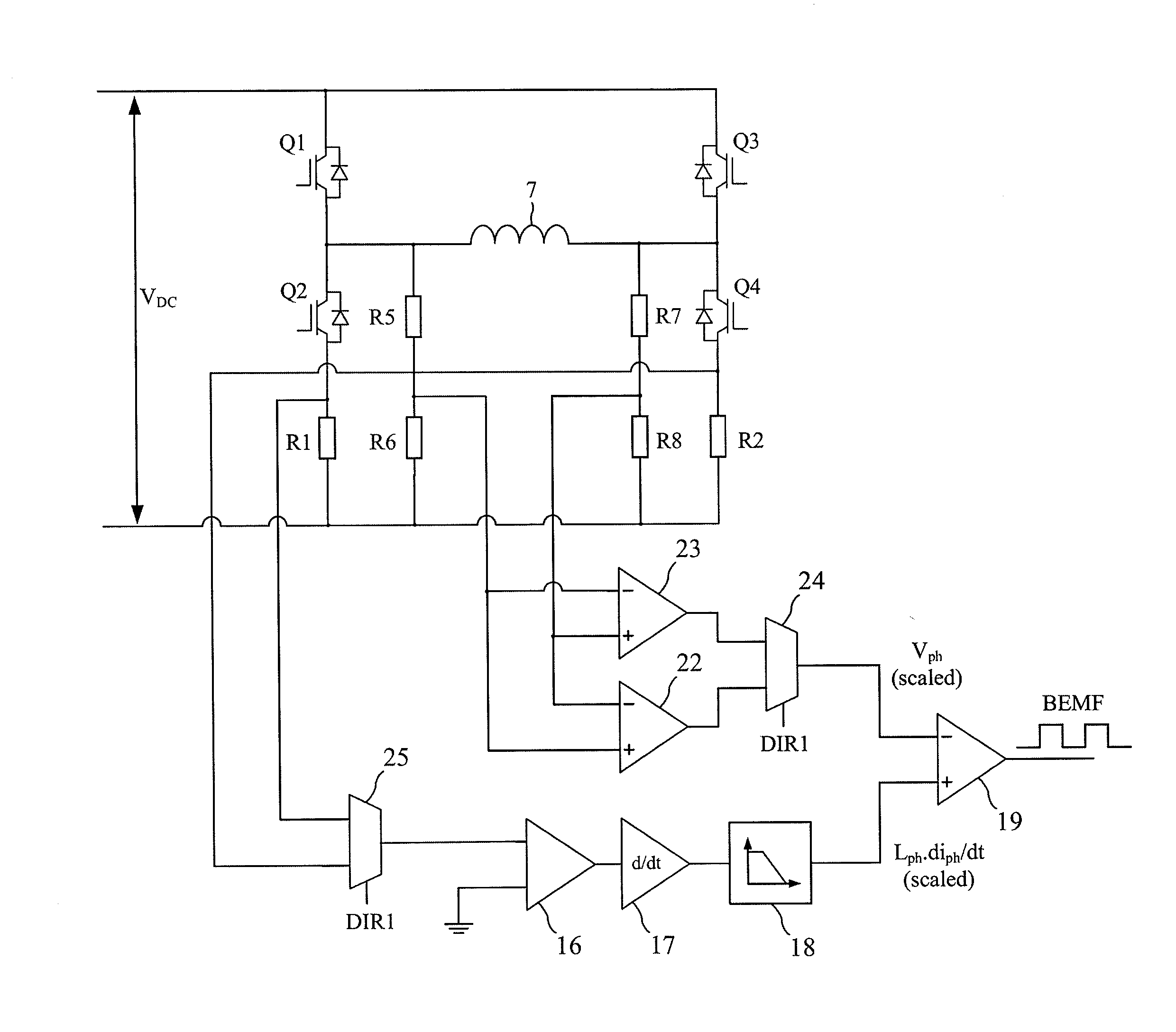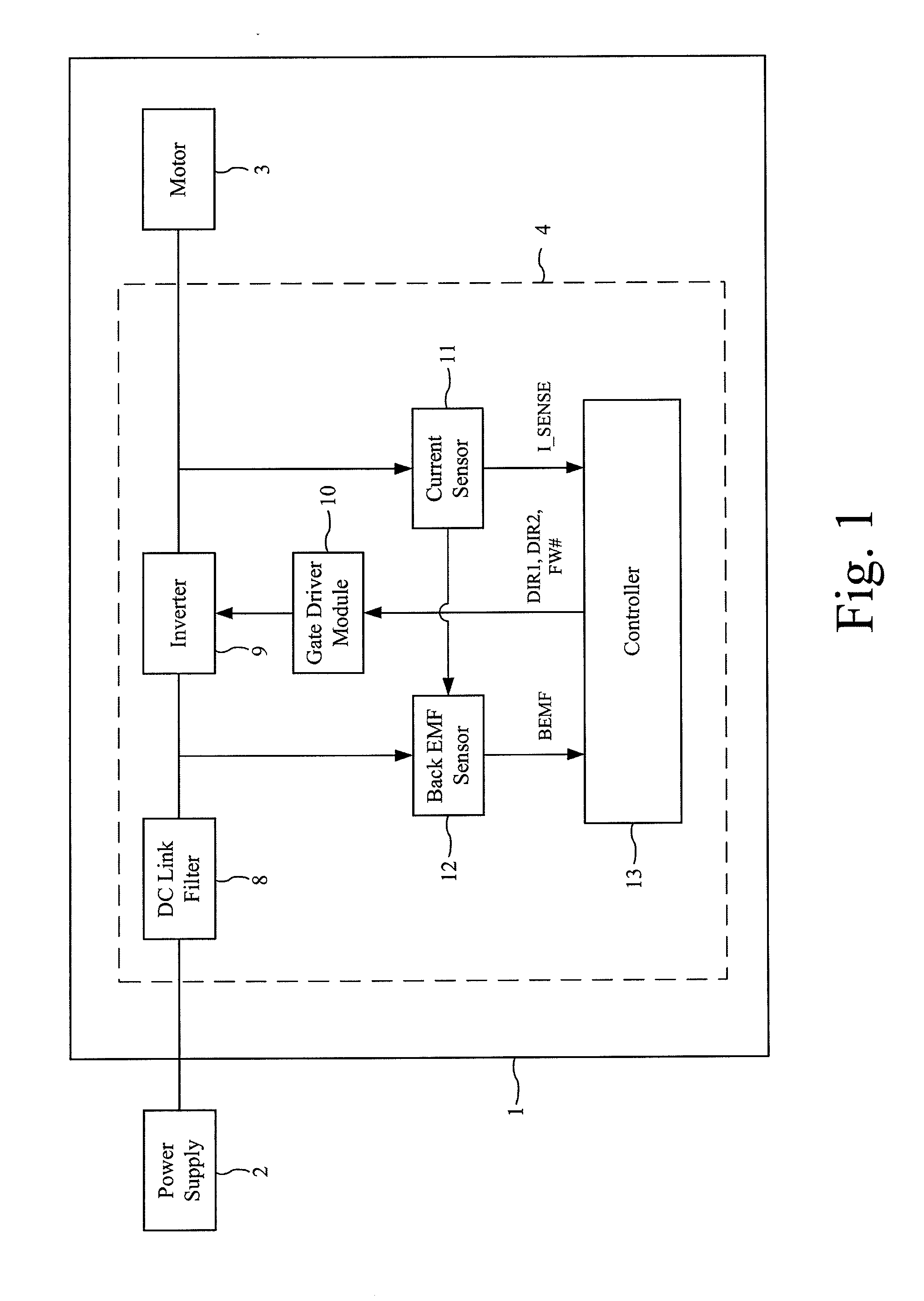Method of determining the rotor position of a permanent-magnet motor
a permanent magnet, rotor position technology, applied in the direction of multiple motor speed/torque control, synchronous motor starter, electronic commutator, etc., can solve the problems of complex integration of sensor within the motor, easy generation of electromagnetic noise, and low component cost of the sensor, so as to simplify the control of the motor and simple and cheap control system
- Summary
- Abstract
- Description
- Claims
- Application Information
AI Technical Summary
Benefits of technology
Problems solved by technology
Method used
Image
Examples
Embodiment Construction
[0038]The motor system 1 of FIGS. 1 and 2 is powered by a DC power supply 2 and comprises a brushless motor 3 and a control system 4.
[0039]The motor 3 comprises a four-pole permanent-magnet rotor 5 that rotates relative to a four-pole stator 6. Conductive wires are wound about the stator 6 and are coupled together (e.g. in series or parallel) to form a single phase winding 7.
[0040]The control system 4 comprises a DC link filter 8, an inverter 9, a gate driver module 10, a current sensor 11, a back EMF sensor 12, and a controller 13.
[0041]The DC link filter 8 comprises a capacitor C1 that smoothes the relatively high-frequency ripple that arises from switching of the inverter 9.
[0042]The inverter 9 comprises a full bridge of four power switches Q1-Q4 that couple the DC link voltage to the phase winding 7. Each of the switches Q1-Q4 includes a freewheel diode.
[0043]The gate driver module 10 drives the opening and closing of the switches Q1-Q4 in response to control signals received fr...
PUM
 Login to View More
Login to View More Abstract
Description
Claims
Application Information
 Login to View More
Login to View More - R&D
- Intellectual Property
- Life Sciences
- Materials
- Tech Scout
- Unparalleled Data Quality
- Higher Quality Content
- 60% Fewer Hallucinations
Browse by: Latest US Patents, China's latest patents, Technical Efficacy Thesaurus, Application Domain, Technology Topic, Popular Technical Reports.
© 2025 PatSnap. All rights reserved.Legal|Privacy policy|Modern Slavery Act Transparency Statement|Sitemap|About US| Contact US: help@patsnap.com



